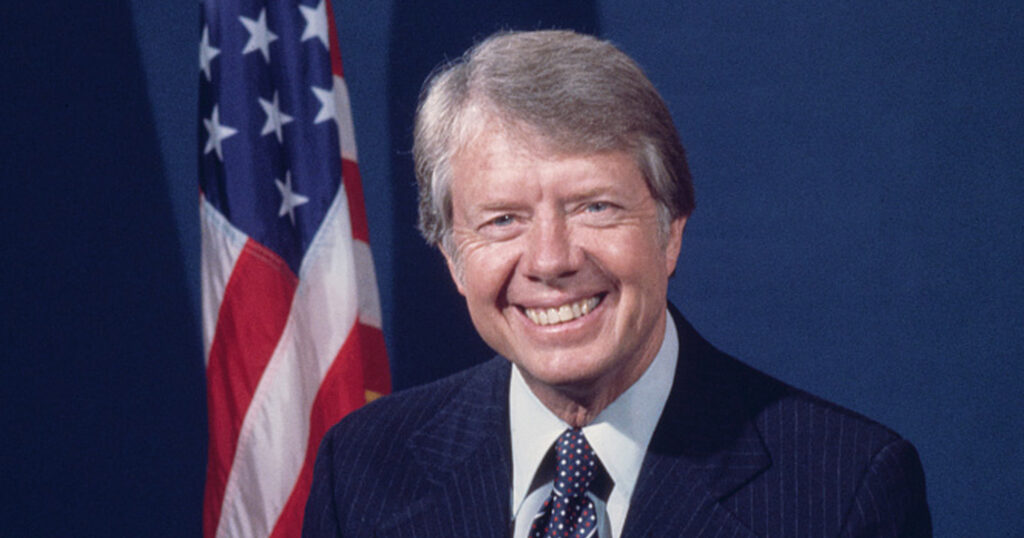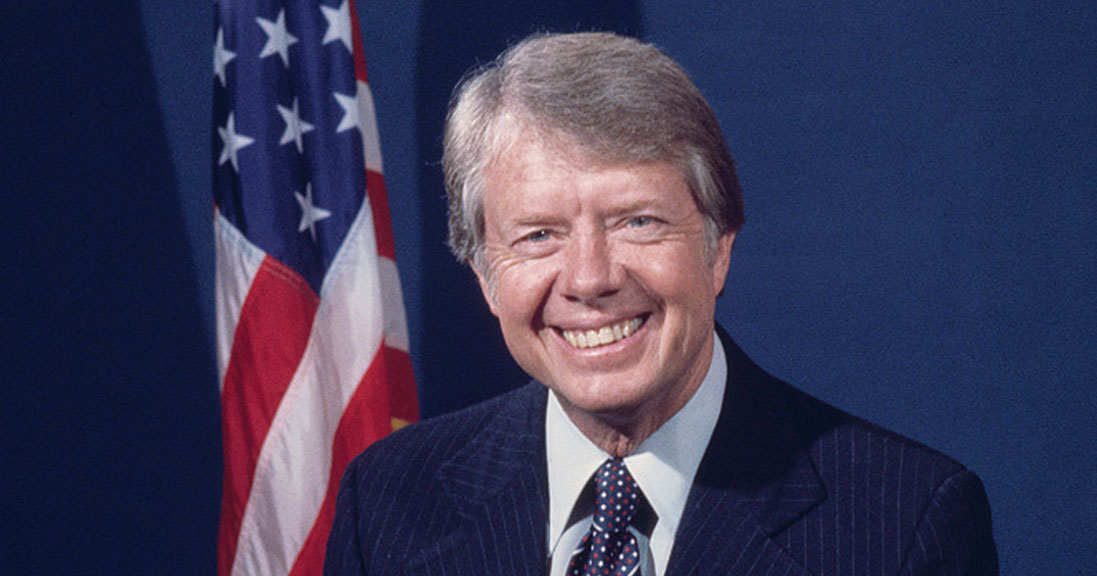You may know President Carter as the 39th president of the United States, an international liaison or a Nobel Peace Prize winner. I know him as all of those things plus a man who made the thoughtful, even wise end-of-life decision to begin hospice care.
Jimmy Carter’s life and the legacy he will leave behind
Although Carter only served one presidential term, the impact he had on the American public is unmeasurable. He led with an initiative to make government compassionate and competent, always striving to meet expectations and increase efficiency.

Among his lists of accomplishments during his presidency are mediating the Camp David Accords negotiations between Israel and Egypt, passing monumental energy and employment bills, and establishing the U.S. Department of Education.
After his presidency, he fought to end Guinea worm disease, volunteered regularly with Habitat for Humanity, won a United Nations’ Human Rights Prize and received the Presidential Medal of Freedom from former President Bill Clinton.
Carter also founded the Carter Center one year after his presidency to address many different nonpartisan issues of public policy and work towards democracy promotion, protection of human rights and disease prevention.
And in 2002, Carter was awarded the Nobel Peace Prize for his pursuit of finding peaceful solutions to conflicts, advancing democracy and human rights along the way. Carter is one of only four American presidents to win the Nobel Peace Prize.
He is a trailblazer, role model and the portrait of an American hero – even at the end of his life.
Jimmy Carter’s hospice journey
In February of 2023, after his health care team determined that hospice was an option, President Carter and his family made the decision to begin hospice care. He passed away on December 29, 2024, at the age of 100, after nearly two years in hospice care.
When Americans reach a point in their health care journey where end-of-life discussions are needed, they often don’t know what options are available to them.
Even though the decision can be difficult to make, choosing hospice allows patients to maintain comfort and dignity during the end of life, while surrounded by their favorite people and things, like President Carter’s favorite – ice cream.
The problem is that too many people put off discussing end-of-life care options until it’s too late. There are also many misconceptions about hospice, including the idea that hospice is only for the last few days of life or that choosing hospice means giving up hope.
This is not the case: choosing hospice care means taking control of your journey, redefining hope and committing to comfort in the last months of life.
Demystifying hospice eligibility and benefits
Hospice eligibility begins when a physician has certified that a patient has six months or less to live if the disease process continues to run its expected course and the patient chooses to stop curative treatment. Therefore, the Medicare hospice benefit is intended to last for six months.
But the unfortunate reality is that the average length of stay for hospice patients is generally around 90 days, with approximately 50% of hospice patients receiving care for just 18 days or less, according to the National Hospice and Palliative Care Organization.
This month marks one year of President Carter’s hospice journey.
It’s not easy to predict death and hospice is an imperfect science. Some people may only be on hospice for a month or two and some may be on for longer than six months. Also, hospice users can choose to exit the hospice program at any time for any reason.
What we do know though is that the earlier hospice care is started, the longer families and patients can receive the full benefits, according to new research from the National Opinion Research Center (NORC) at the University of Chicago.
The NORC study found that when hospice stays are less than 15 days, patients and families typically don’t have enough time to utilize and receive the full benefits.
And the benefits of hospice are plentiful.
Hospice coverage includes an interdisciplinary care team, medications related to terminal illness, durable medical equipment (DME), pain relief and symptom management, medical, nursing and social services, aide and homemaker services and spiritual care for both patients and their loved ones.
Hospice care has been shown to increase satisfaction and quality of life, improve pain control, reduce physical and emotional distress, and reduce prolonged grief or emotional distress for the family.
There is an ever-present need to admit patients to hospice sooner – and that starts with having earlier conversations.
Now is the time to start end-of-life conversations
If I could share any advice, it would be to have those end-of-life care conversations with your loved ones as soon as possible. It takes hours of hard and awkward conversations, but I chose to start them with my own parents to be better aligned with what they expect in the future.
I have seen it time and time again where a patient didn’t have an end-of-life plan. This can result in major disagreements between loved ones about end-of-life wishes.
That’s why it’s so important to start advance care planning and know what your family members would prefer in regard to their health care. The end-of-life journey is already hard. Having these conversations early makes a difficult situation just a bit easier.
I encourage you to have those uncomfortable conversations about death and dying.
Here are a few examples of the questions I asked my parents during our conversation:
- Do you want potentially heroic interventions at the end of life? Which ones?
- How do you feel about ventilators or other methods of keeping you alive?
- How do you feel about CPR?
- When near the end, do you want to be at a hospital, a nursing facility or at home?
- Whose home do you want to be at, mine or yours?
- Do you care if people come and help you at the house?
- Do you want a chaplain to come visit you?
- Is there anything else that really matters to you that you want me to know?
After you document your loved one’s wishes and receive clarity, you can feel confident that your parents or loved ones will receive end-of-life care that’s consistent with their wishes – not anyone else’s. They’re in control and you can feel comfort in the fact that you are adhering to their specific care preferences.
Don’t forget to document these wishes in the proper format which may vary by state and to discuss your wishes with your physician and other family members.
Then, it is always a good idea to ask about what they want after they die.
Do you want to be buried or cremated? What songs do you want played at your funeral? What headstone or images would you like? Where do you want to be?
You’re never too young and you’re never too old to have these conversations. The Hospice Foundation of America offers some great prompts and ways to start an end-of-life conversation.
If you or your loved one is on home health care with Enhabit Home Health & Hospice or any other health care agency, ask one of your clinicians about advance care planning.
Thank you, President Carter
While it was likely difficult, I believe the Carters made an excellent decision – and I want to thank them for having those hard conversations and making such a private decision in the public light so that others can learn more about hospice.
A thanks should be extended to President Carter’s hospice care teams and physician as well. There had to be a team of people around him that helped him make this decision. And thank goodness for their compassion and expertise.
Thank you again, President Carter, for setting an example and opening the door for families across the nation to start important conversations about end-of-life care.
Enhabit is here to help you find the best care for you or your loved one. Contact us today to learn more about our hospice services.
Social Share
At Enhabit our patients are our number one priority. From providing the latest medical practices to building deep personal connections, we’re focused on upholding every patient’s dignity, humanity and sense of control on their health care journey.
Home health
Our home health services give patients access to the care they deserve in the comfort of their own homes. From disease and injury management to recovery from surgery, our clinicians help patients confidently achieve their healthcare goals.
Hospice care
Our hospice care services place importance on the comfort of every patient living with a terminal illness. Our caring professionals are dedicated to providing not just physical care, but spiritual and emotional support to every patient and their loved ones.

 Back to Resource library
Back to Resource library




